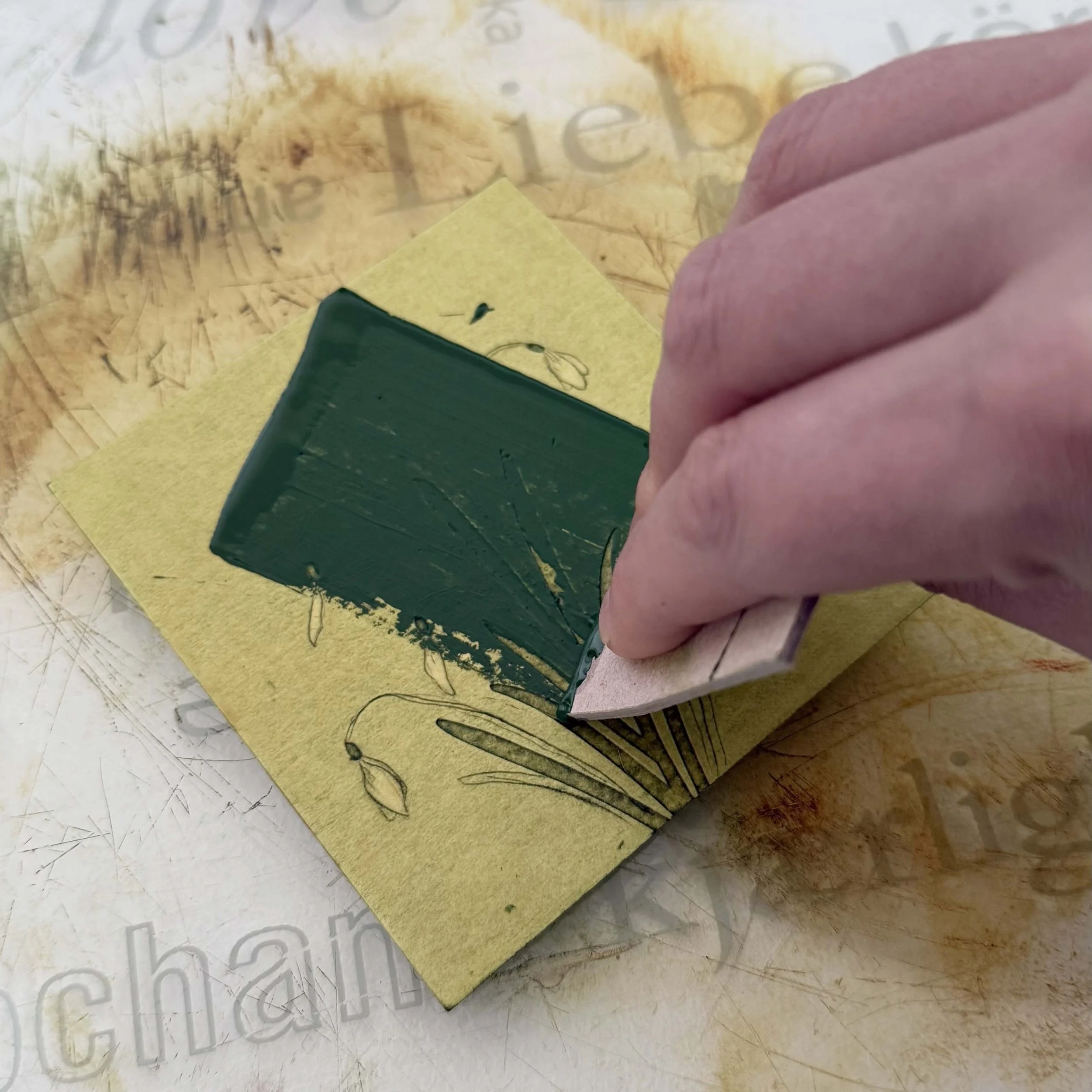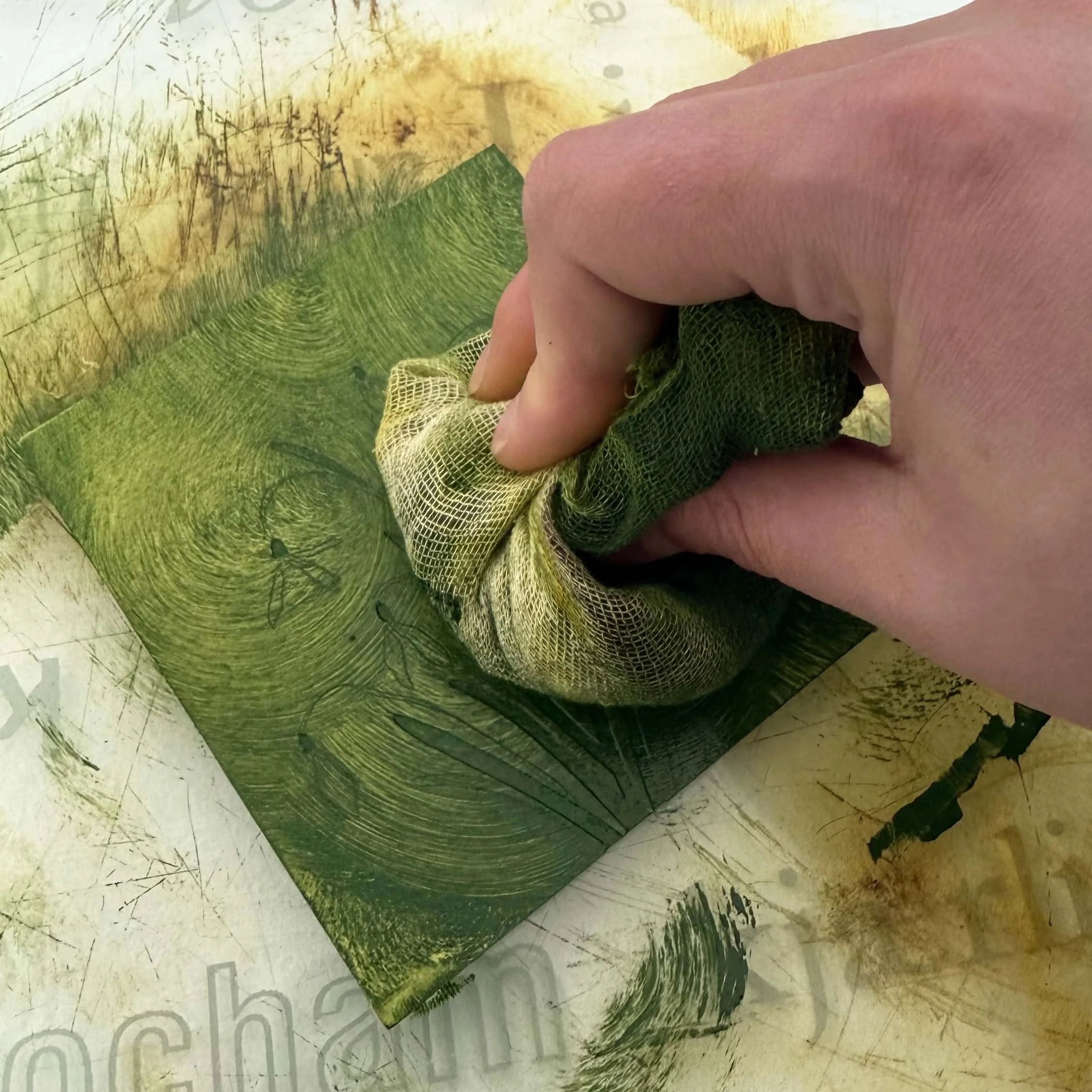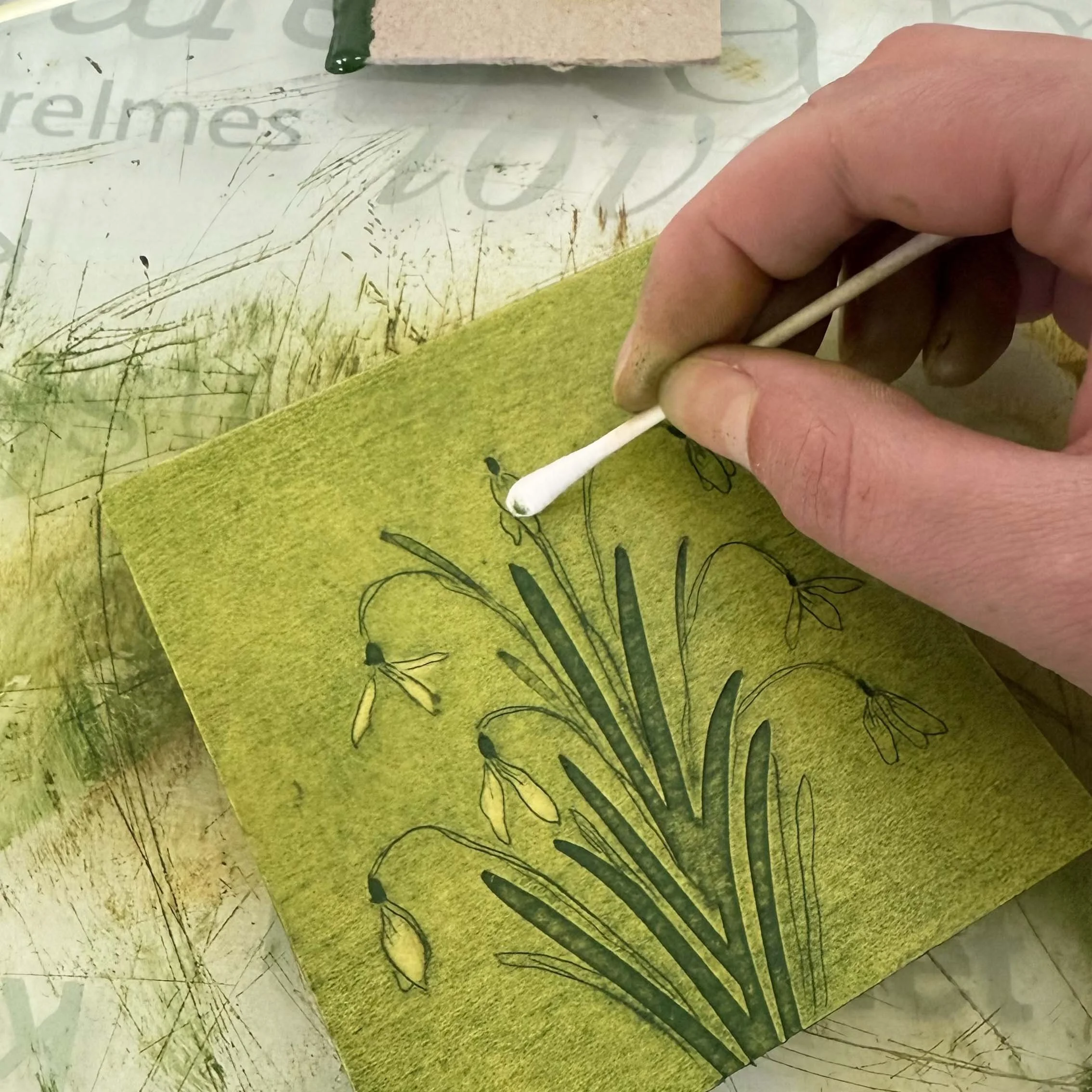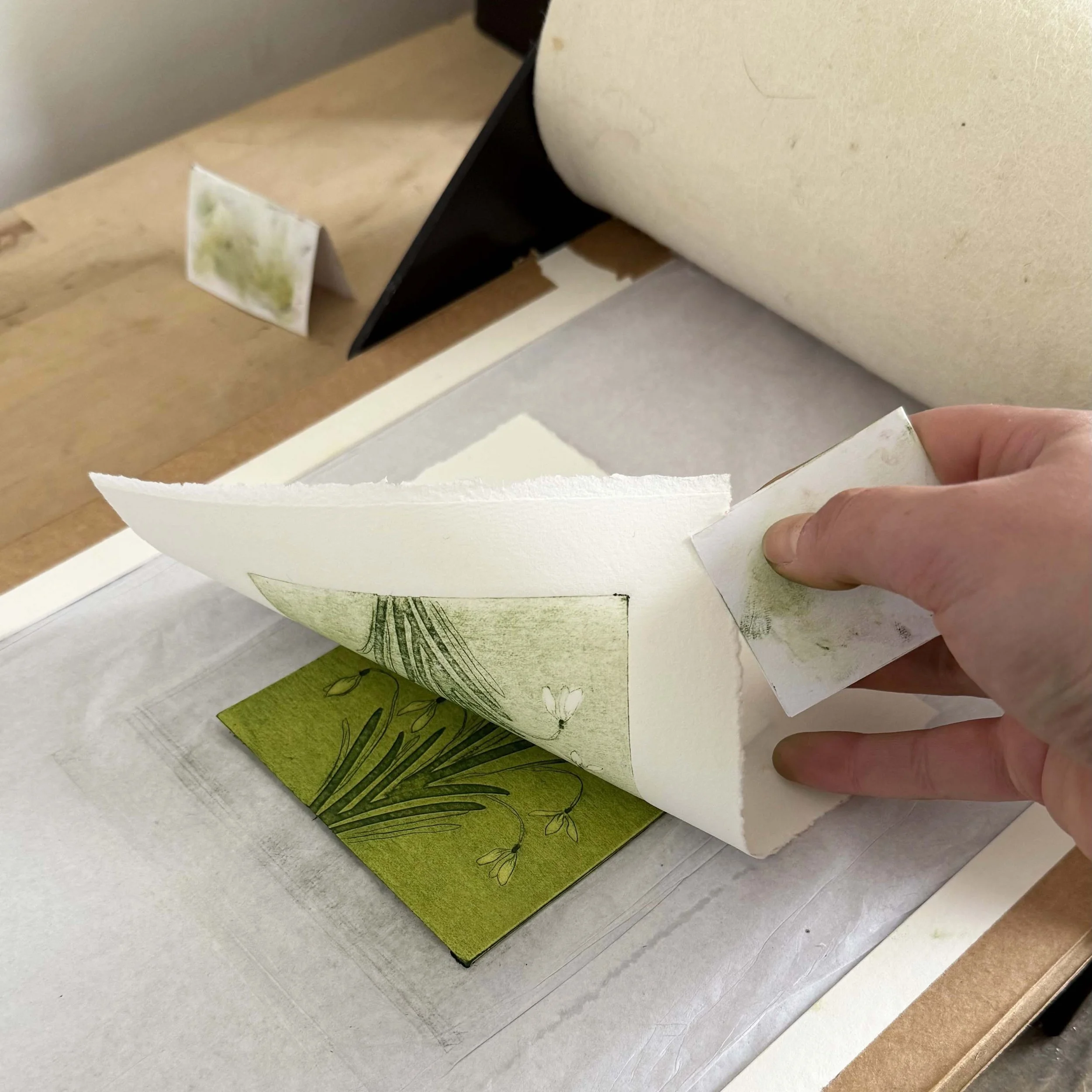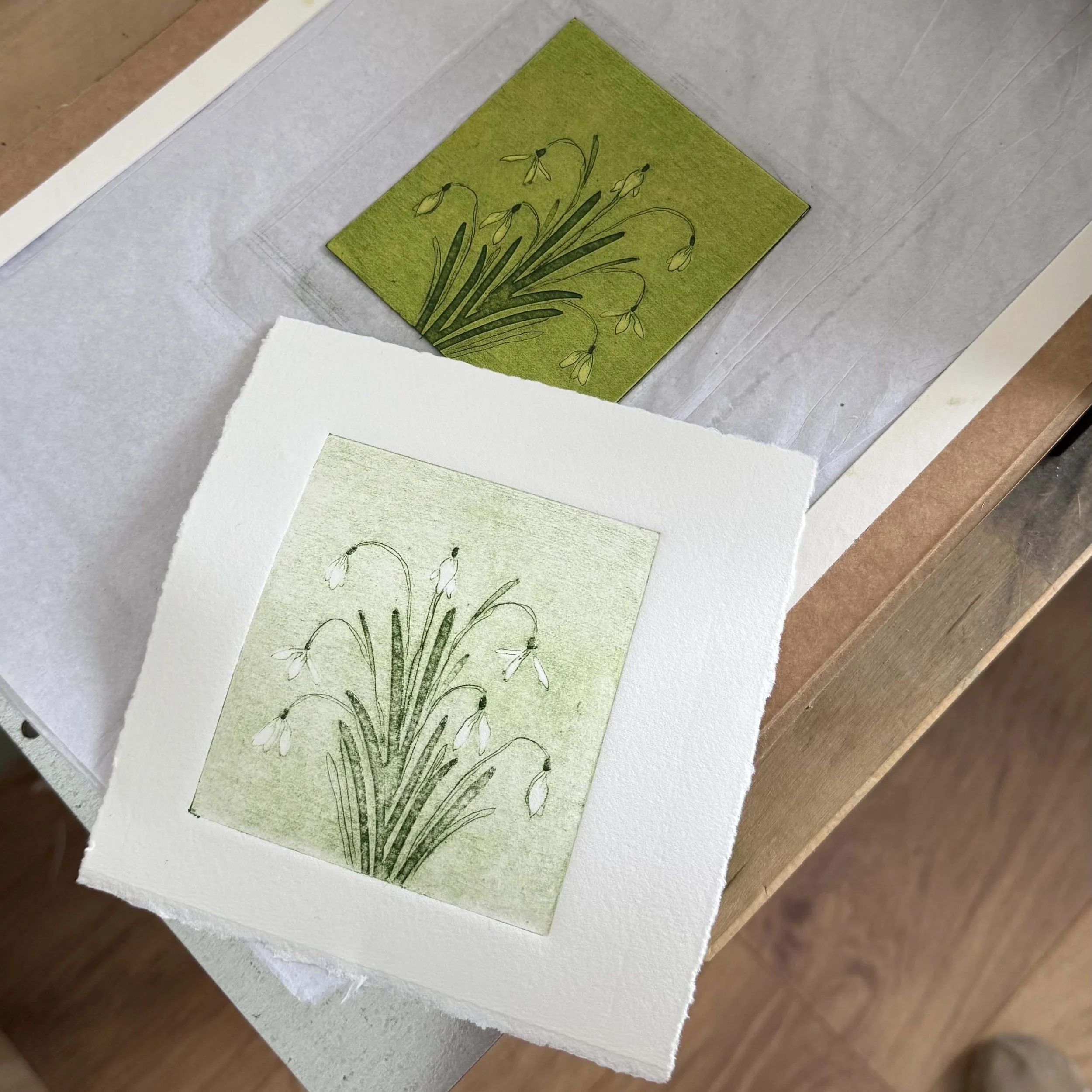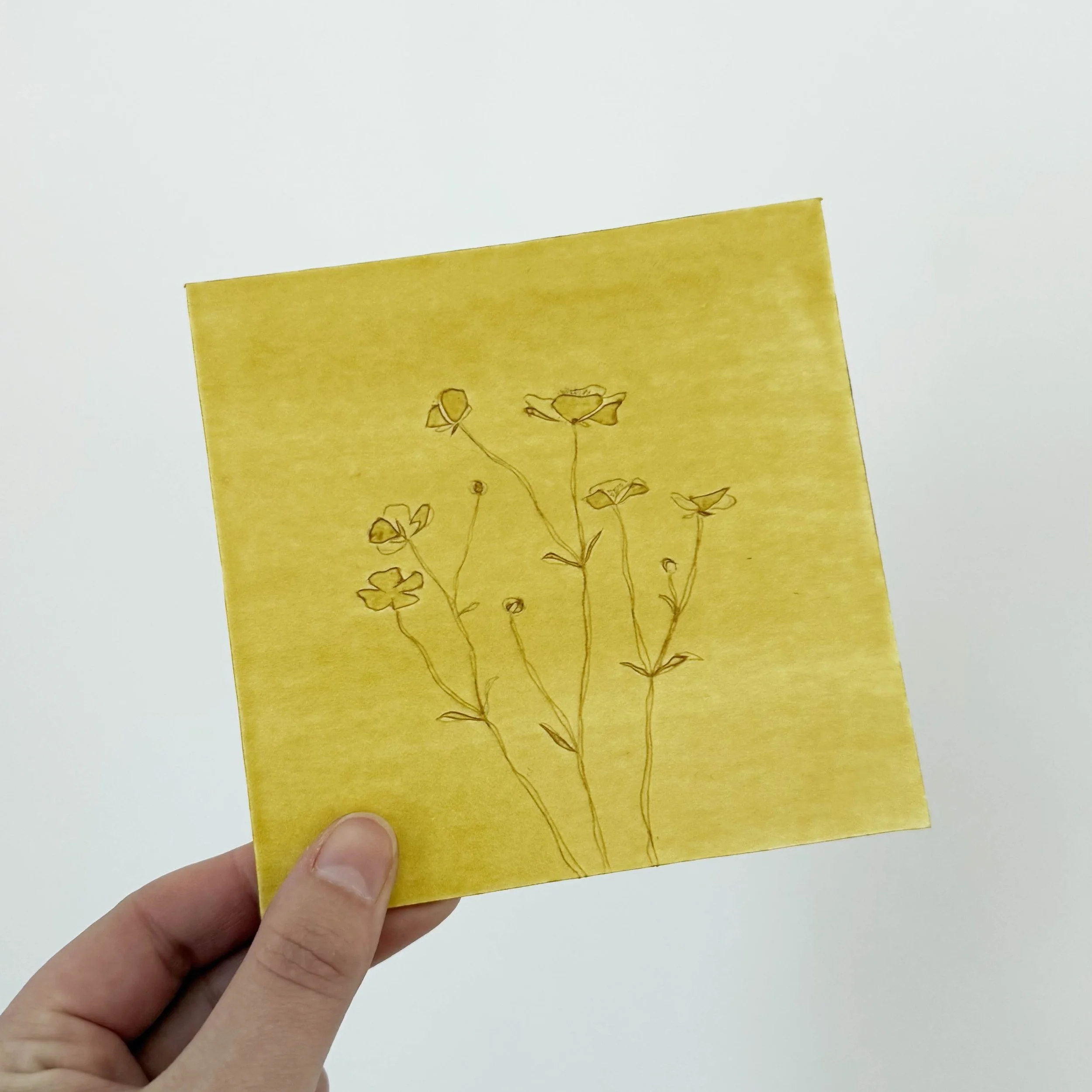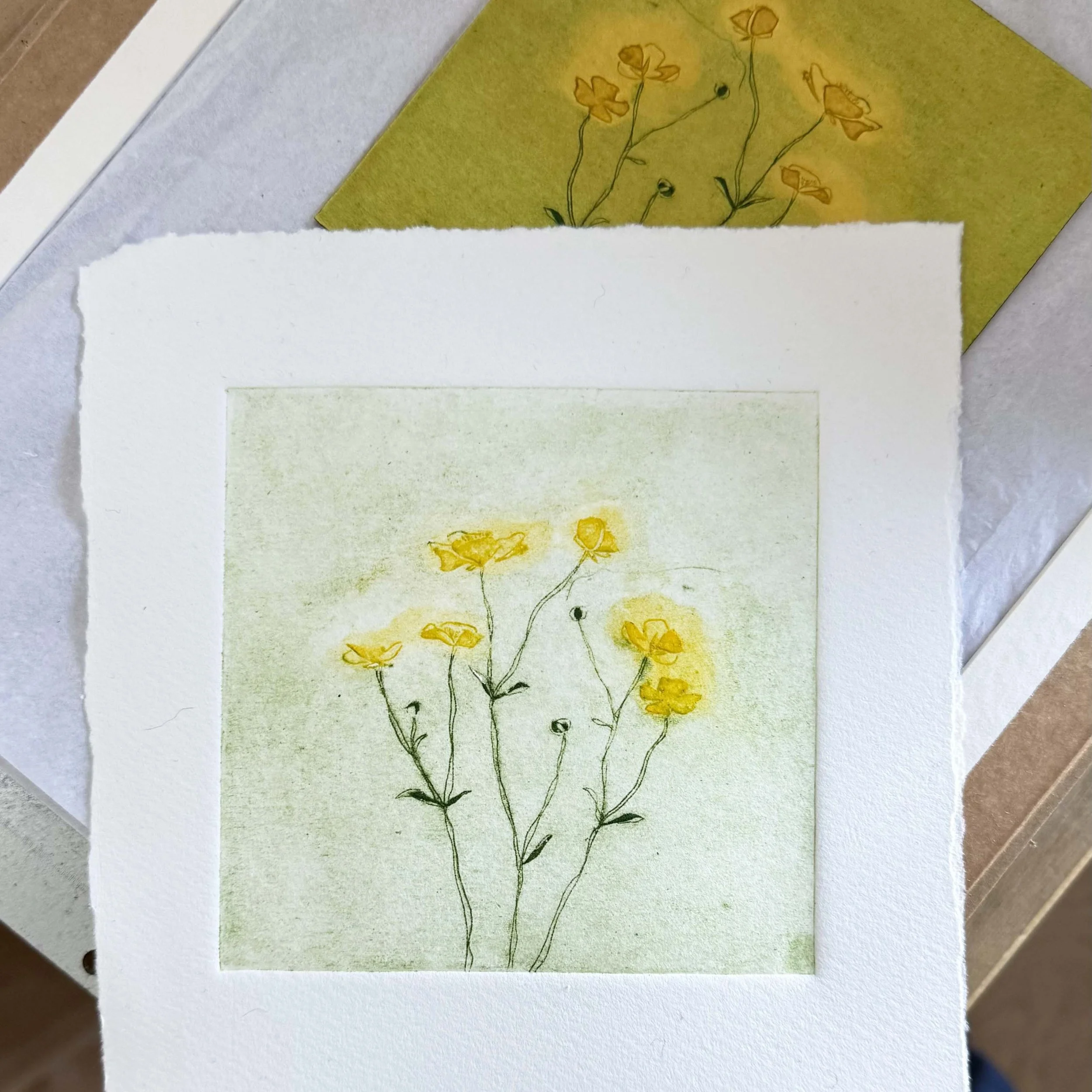Exploring Collagraph Printmaking: A New Adventure in Print
As a Yorkshire artist and drypoint printmaker, I’m always looking for new ways to expand my printmaking techniques. Recently, I’ve started exploring the wonderful process of collagraph printing, a method I’ve long admired for its ability to add tone and texture to a print. This technique is proving to be an exciting addition to my artistic journey, allowing me to experiment with depth, layers, and rich textural effects.
But what is Collagraph Printing?
Collagraph printing is a wonderfully versatile printmaking process where the printing plate is created by collaging different materials together. Collagraph plates can be made from just about anything, such as cardboard or tetrapaks, a material that is readily available and easy to manipulate. By carving into the surface with a craft knife/scalpel enabling me to peel back the layers, and scoring marks, I can create different tones and textures. Adding elements like masking tape, PVA glue, and textured papers can further enhance the detail and depth of the print.
Once the plate is complete, it needs to be sealed with a thin layer of shellac varnish. This helps the plate hold ink effectively and ensures a smooth printing process. As with all intaglio techniques, ink is applied over the entire plate and then carefully wiped away from the raised surfaces, leaving ink in the grooves and textured areas. The plate is then printed onto lightly damp paper using a high-pressured etching press, capturing the intricate details and textures in a beautifully unique way.
Buttercups collagraph prints drying
My Approach to Collagraph Printing
As I dive into this technique, I’ve been using mountboard for my plates, something I have in abundance from mounting previous artworks. I love how this thick board allows me to carve into it using my drypoint etching scribe, blending elements of my drypoint etching style with this new process. The combination of carving, cutting, and peeling back layers is giving me a whole new way to explore texture and depth in my work.
For my initial pieces, I’ve been focusing on small prints of spring wildflowers. This has been the perfect way to get a feel for the process, experiment with different inking techniques, and discover how I can incorporate collagraph into my wider printmaking practice. I’m particularly enjoying the depth of colour and tone that this method creates, as well as the beautiful simplicity of the shapes and lines.
The Joy of Experimentation
One of the biggest lessons I’ve learned as a printmaker is that printmaking is a journey. Every new technique comes with a learning curve, and collagraph printing is no exception. It’s important to experiment, play, and enjoy the process rather than rushing toward a finished piece - sometimes easier said than done when you have an idea in your mind! Exploring collagraphs is opening up so many possibilities for me, and I can’t wait to see how my work develops.
As a West Yorkshire artist, I’m always inspired by the landscapes and nature around me, and I can already see how collagraph printmaking will allow me to capture those textures and tones in a completely new way. I’m excited to continue refining my technique, creating larger prints, and pushing the boundaries of what I can achieve with this process.
So, if you’ve ever been curious about collagraph printing, I highly recommend giving it a go! It’s a wonderfully tactile and rewarding printmaking method that offers endless possibilities. And for me, this is just the beginning of what I hope will be a long and exciting journey with collagraphs!



